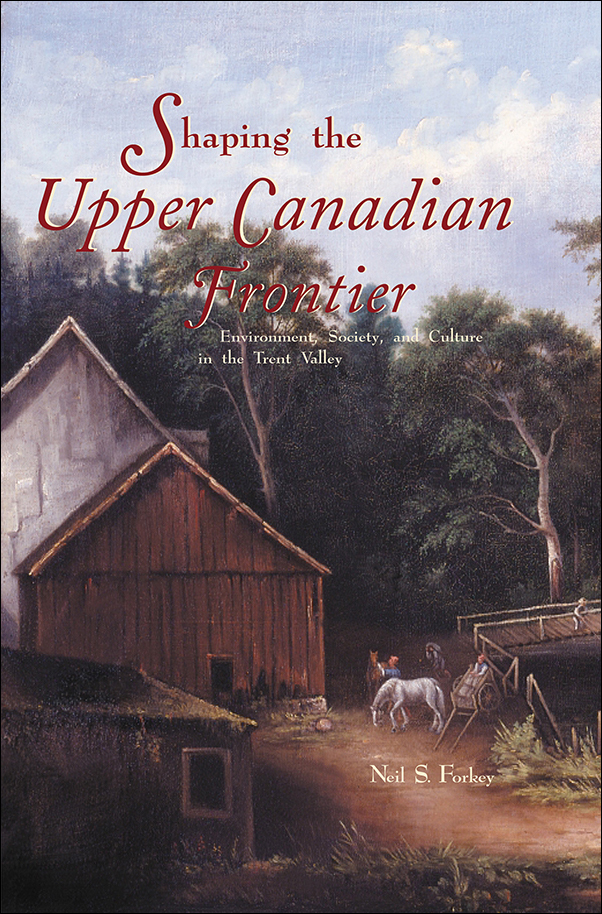
Shaping the Upper Canadian Frontier: Environment, Society, and Culture in the Trent Valley
Neil S. Forkey
$34.95 CAD / $39.95 USD (S)
179 pages, 14 illustrations
6 x 9 inches
Hardback: 978-1-55238-049-9
Library PDF: 978-1-55238-448-0
March 2003
Shaping the Upper Canadian Frontier is the story of the Trent Valley during the nineteenth century, one of a settler society and a microcosm for wider human and environmental changes throughout North America.
Neil Forkey begins by placing his study within the literature of settler societies of Upper Canada and North America. The Trent Valley’s geography, prehistory, and Native peoples, the Huron and the Mississauga, are discussed alongside the Anglo-Celtic migrations and resettlement of the area.
Careful attention is devoted to the life and nature writings of Catherine Parr Traill. Her descriptions of life and environmental changes in the Valley point the way to a keener understanding of Canadian attitudes about the natural world during the nineteenth century.
Forkey makes a significant contribution to the growing body of work on Canadian environmental history. Themes of ethnicity and environment in the Trent Valley are brought into wider perspective with comparisons to other areas of contemporary settlement throughout the British Empire and North America.
Neil Forkey is Senior Lecturer in the Canadian Studies department at St. Lawrence University. He specializes in North American social and environmental history.
Part One: Foundations
Chapter 1: Introduction
Ecological Locale: The Trent Valley as a Living Place
Human Cultures: The Settlement and Resettlement of Trent Valley
Nature and National Narrative In Canada
Chapter 2: Changes in Mississauga Lands: Ecology and Economy, 1790s-1830s
Mississauga Lands
Resistance
Adaptation and Persistence
Towards Resettlement
Chapter 3: Creating New Home Places: Anglo-Celtic Migrants, 1820s-1850s
Ecological Locales: Ireland
Human Cultures: Ireland
Making a Home Place: Ecological Locales and Human Cultures of the Trent Valley
Part Two: Contexts
Chapter 4: Damning the Dam: Ecology and Community in Ops Township
"The Largest Mill-Dam in the World"
The Natural Setting
Second Nature: Toward a Home Place
Second Nature: The Pre-Industrial Context
Second Nature: The Trent Canal, Purdy’s Mill and Threats to Home Place
Crafting a Defense of Public Rights
Nature Responds
Conclusion
Chapter 5: The Road from Bobcaygeon: Lumber and Colonization, 1850s-1870s
The Natural Setting
Second Nature: Regional Expansion and the Lumberman’s Vision
Second Nature: The Settlers’ Reality
Local Knowledge: Road Construction and the Folly of Settlement
Postscript: Toward an Era of Conservation
Conclusion
Chapter 6: The Trent Valley Oracle: Catharine Parr Traill
Natural History: Catharine’s Early Years
Second Nature: Homing in the Backwoods
Second Nature: The "Canadian Gilbert White"
Chapter 7: Conclusion
Notes
Bibliography
Index
A welcome and useful contribution to Canada’s environmental history.
—Graeme Wynn, Scientia Canadensis
The book will have a lasting impact on Canadian historiography and the broader field of global environmental history.
—Richard Judd, University of Maine